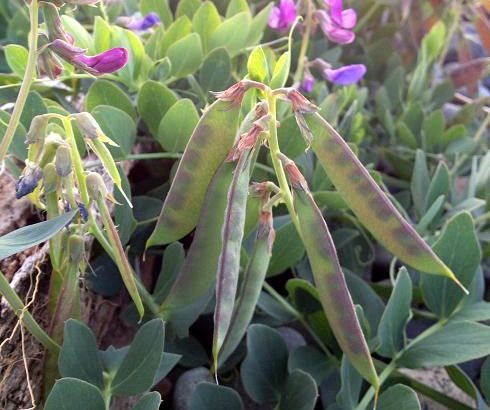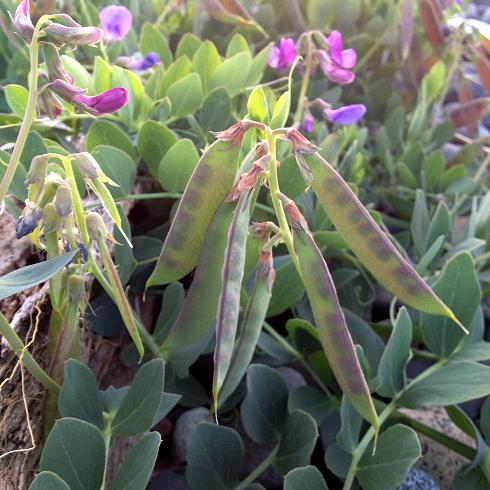 I haven’t posted as regularly as I usually do this summer and for that I deeply apologize to the handful of crazed kitchen folk and family members that subscribe to EDB. *laughs* We are still here, banging out recipes and philosophizing on life the universe and everything… It’s just been a rough couple ‘o months. Operation Best Summer Ever seems like a lifetime ago.
I haven’t posted as regularly as I usually do this summer and for that I deeply apologize to the handful of crazed kitchen folk and family members that subscribe to EDB. *laughs* We are still here, banging out recipes and philosophizing on life the universe and everything… It’s just been a rough couple ‘o months. Operation Best Summer Ever seems like a lifetime ago.
Unlike that long lost adventure on Quadra THIS summer has been about work and more work. No hiking. No biking. Zero gardening. Camping? Forget it. No sun and no fun… Just work.
But scattered amongst the endless grey weeks of life on the line sprout little moments of zen that keep me sane. Like the peas I found growing along the beach next to my post-work meditation spot.
You may have spotted them during your last beach fire (you lucky people you) sprouting inconspicuously from between piles of driftwood. They look a lot like domestic pea plants, just a wee bit shorter. A Stubby little collection of tendrils covered in bright green spoon-shaped leaves and the occasional little purple flower.
The reason they look like peas is ‘cause “surprise surprise” they are peas. Tough little wild peas that sail the seven seas! Each little pea can remaining dormant for up to five years in salt water before washing ashore and taking root in rocky soil.
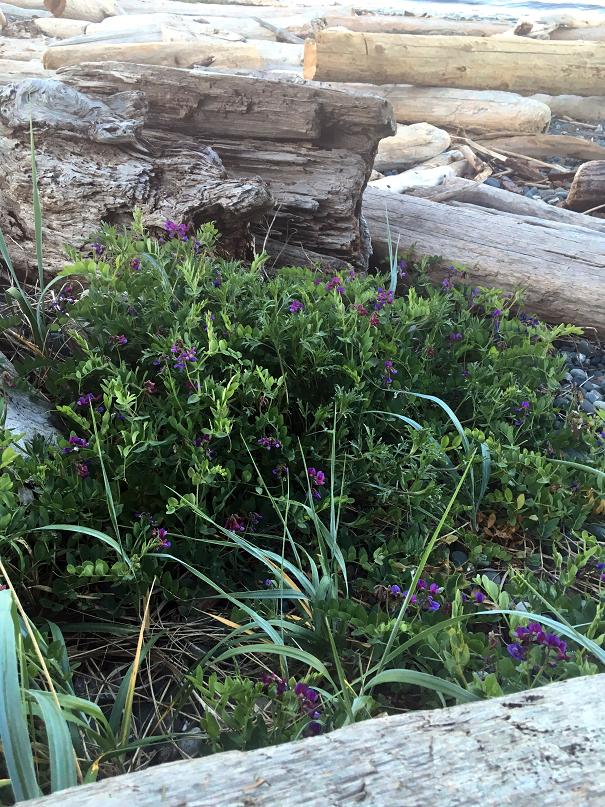 During the latter half of June the flowers give way to pods that can grow up to 2 inches long and contain three to six small peas. Later (around mid-late July) the pods go from a green-rust colour to dark brown indicating that they are ready to harvest.
During the latter half of June the flowers give way to pods that can grow up to 2 inches long and contain three to six small peas. Later (around mid-late July) the pods go from a green-rust colour to dark brown indicating that they are ready to harvest.
Yep, I said harvest.
Beach peas are just another addition my ever-growing list of “I can’t believe that is edible” flora that exists out here on the West coast.
What You Will Need To Forage For Beach Peas
Not much; just a baggie or Tupperware container to carry your peas in… And maybe bring your camera to take pictures of blue herons. They’re always out posing during the summer.
Once you’ve found a patch of beach peas that seems healthy and free of discarded cigarette butts and crushed beer cans it’s time to collect the goods. Simply pinch two fingers at the base of each pea (where the flower was) and give ‘em a twist. Pods that have an even brown colour are ready to drop and should twist off quite easily while pods with a touch of green will put up more of a fight.
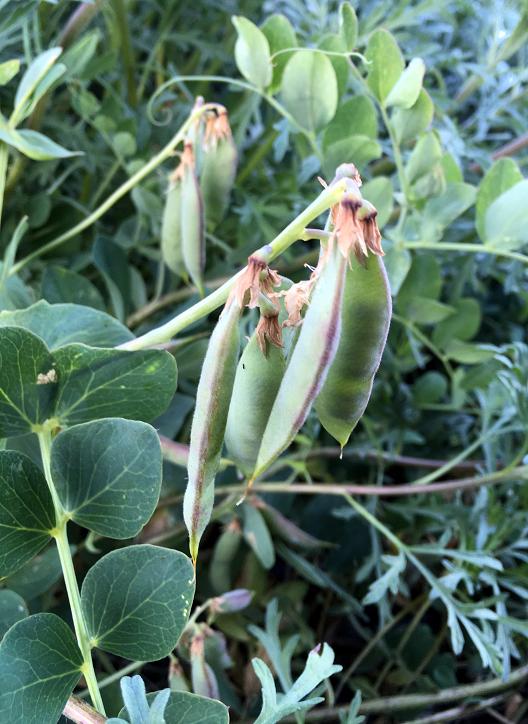 Now before you crack open those pods and start feasting I should address the elephant on this beach: There is a bit of debate online about just how many beach peas one should consume. There has been a long-standing belief amongst European-Americans that beach peas are toxic and can lead to a nasty paralytic disease.
Now before you crack open those pods and start feasting I should address the elephant on this beach: There is a bit of debate online about just how many beach peas one should consume. There has been a long-standing belief amongst European-Americans that beach peas are toxic and can lead to a nasty paralytic disease.
There is quite a bit of evidence from online foragers I trust (guys like T. Abe Loyd and Hank Shaw) that beach peas are being unfairly lumped in with their more toxic cousins (like the blue-flowered grass pea) and are perfectly safe to eat in small quantities with proper preparation.
That’s all you need to remember right there: Small quantities, proper preparation. Just a handful of pods, shucked, rinsed and tossed into some boiling salted water for ten minutes will be enough to feed you and some friends safely. Just toss out the bath water when you’re done ala stinging nettles.
Blanched beach peas are much smaller and denser than their store-bought cousins and stay “al dente” despite quite a bit of cooking. They have all the sweetness of a snow pea tempered with a bitter chlorophyll bite and impart a really meaty legume flavour to any simmered or braised dish.
But because of their mini-lentil size and the aforementioned portion rules you can’t ever serve them as a main event. They will forever be an accoutrement or garnish in our house… Sad but true.
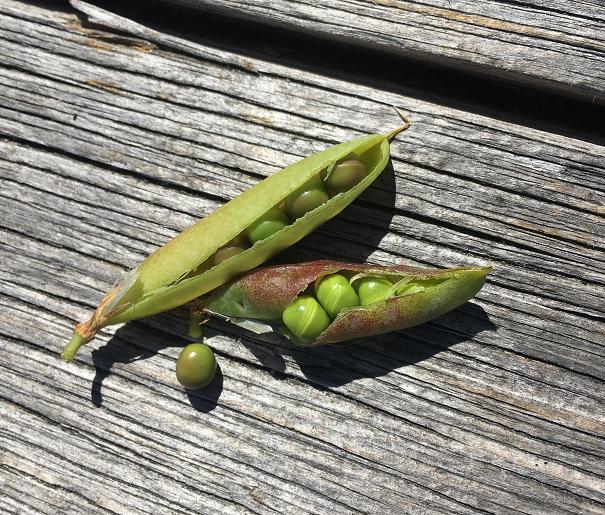 So you’re out there on the beach (once again, lucky you) staring down at this gnarly little plant with some friends wondering if it’s even worth it to fire up the Jet-boil for a handful of little wild peas. The answer is yes and no.
So you’re out there on the beach (once again, lucky you) staring down at this gnarly little plant with some friends wondering if it’s even worth it to fire up the Jet-boil for a handful of little wild peas. The answer is yes and no.
Would I recommend more than half an hour’s worth of work for wild peas? Nope! Just gather a bit to impress your friends and teach ‘em something about local plants then wander home and sneak those peas into their dinner. If your friends are locavores like mine this will blow their minds!
Here’s my move: Gather your crew for a beach fire (if there are no fire bans) or go for a pre-dinner walk and return home with your peas and cook ‘em in your back yard al fresco. Boil ‘em, drain ‘em. Fire up a pan with olive oil, bacon ends and finely chopped garlic. Add fresh clams, beach peas and lots of crisp white wine and simmer it all until the clams pop. Stir in some freshly-cooked linguine, toss and serve.
